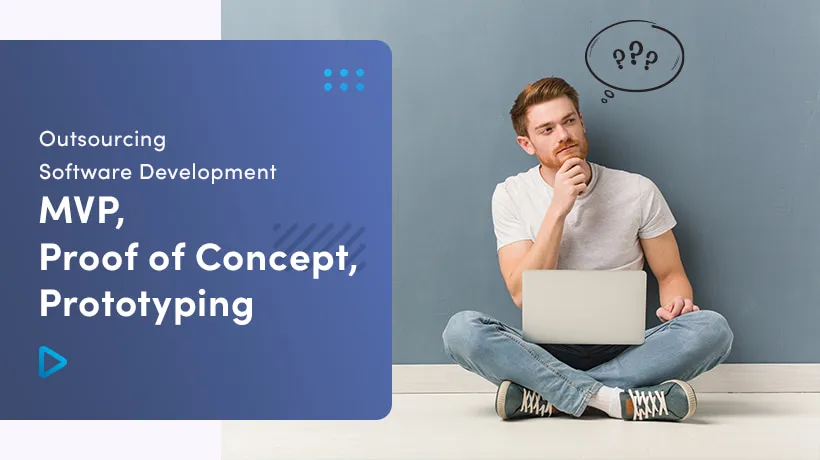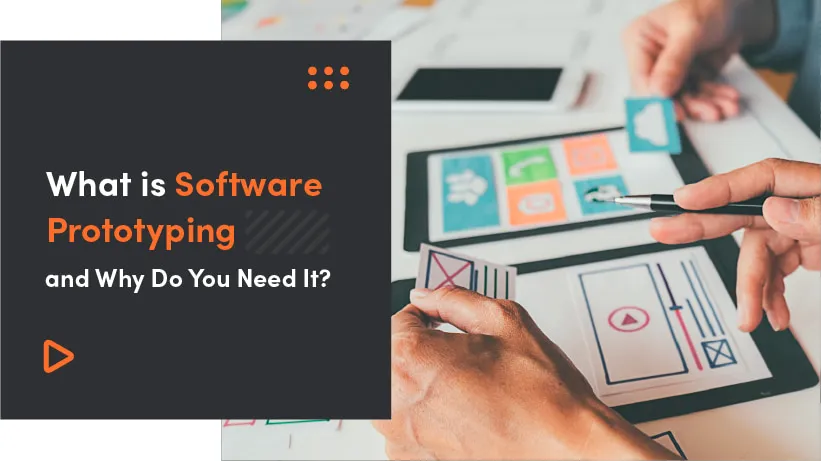Minimum Viable Product (MVP), Prototype and Proof of Concept (POC) are essential stages in software development. POC is a preliminary stage used to determine the feasibility of the core idea and if it can be developed into a full product. It's used mainly when upgrading technology or integrating third-party solutions. A Prototype is a next step that provides a working model of the product to further validate design concepts and functionality with stakeholders and users, especially useful in complex systems with intensive user interfaces. Lastly, MVP is the most basic version of the product released to the market to collect user feedback and validate market demand, focusing on core functionality to minimize initial costs and time. Each serves different purposes and is chosen based on the specific needs and stage of the project.
What you will learn from this article:
- What is the primary purpose of a Proof of Concept (POC) in IT, and when is it most beneficially employed?
- How does a Proof of Concept differ from a Prototype in terms of functionality and scope?
- In what scenarios is it most appropriate to develop a Prototype, and what types of software development does it best suit?
- What are the critical considerations and best practices for successful Prototyping in software development?
- How does a Minimum Viable Product (MVP) differ from both a POC and a Prototype, and what are its primary goals?
- What are the main reasons for creating an MVP, and how does it benefit the overall development process?
- What are the steps involved in building an MVP, and how do they contribute to understanding market needs and product feasibility?
What are the differences and when do you need them?
Proof of Concept, Prototype, and Minimum Viable Product (MVP) are the three most common words you will hear during any software development. Each of those words describes a version of a finished product but at different stages of completion so it is very easy to get confused.
This post will guide all CTOs and Product Owners to learn how to start their software development. Having know-how of these three words is very important as these terms help in planning and defining the project. It is the most important part of the software development process.
So, let’s get started.
Proof of Concept (POC) - Everything You Need to Know
Here we will explain POC in detail from its definition to uses and benefits.
What is Proof of Concept in IT?
A proof of concept is a bare-bones technical feasibility test of your central premise that determines whether or not an idea can be achieved.
A proof of concept only covers a portion of our potential product. Many POCs that discuss each of the features and functionality can thoroughly evaluate a complex idea.
What are the Main Points of POC?
The main points of POC are:
- The concept addresses the basic question: Can a product be built or not?
- It tests the assumption for the real-life final product
- It helps to define the idea, functionality, feasibility of a product
- It is a theoretical demo to see if the product is possible
When to use Proof of Concept?
#1: When you are Upgrading your Product with Latest Technology
At this point, a proof-of-concept helps you to assess the new feature's viability without putting the company at risk.
#2: When you are Boosting an Existing Technology
POC can help to determine which option is the best. It is possible to test hypotheses without actually designing a product. This helps businesses save valuable time and money.
#3: When you are using Third-Party Solution for your Project
Using a third-party solution is often risky, so conducting a feasibility check before deciding on a solution will save you a lot of time. A perfect example would be integrating a payment system into your app. Before you begin integrating the solution, make sure the technology is feasible.
Top 3 Advantages of Proof of Concept

The top 3 advantages of POC are as follow:
1. Project Managers can Identify Potential Risks and Hurdles
Creating a proof of concept helps project managers in identifying potential threats and barriers in the development process. Managers should predict challenges and schedule their projects accordingly while still planning, rather than discovering them before or after the product release. It helps them to eliminate risks and obstacles.
While the POC cannot guarantee a smooth execution of project management fundamentals, it can improve the product's chances of success.
2. Helps Develop Feasibility Report for Stakeholders
Before project managers may ask for funds for their plan, they must first convince their stakeholders that the initial investment made is worthwhile.
They will demonstrate the functional product idea's usability and viability through POCs. They can clearly illustrate the benefits of the proposed product to the company's operations, brand image, and customer relations, among other things.
3. Project Leaders can Forecast Future Chances for Scalability
When project managers consider developing a product, they and their stakeholders almost always expect it to be scaled up. As a result, project managers may use POCs to check the viability of a concept and its scalability, whether it is done immediately or over time.When in the proposal stage, POCs will assist project managers in minimizing development costs and addressing scope creep.
6 Easy POC Templates for Software Developers
To aid in the planning and to execute upcoming IT projects, we've compiled a list of free proof-of-concept models, and examples found online.
Template # 1 - Commonwealth of Pennsylvania, Department of Public Welfare
This detailed proof-of-concept document was created by two IT executives ten years ago and continues to be a helpful method to create a proof-of-concept for custom-built market offerings and new technology investments. The document gives comprehensive descriptions for the POC process's preparation, monitoring, and performance and a helpful template at the end.
Template # 2 - Intel
Intel's step-by-step guide explains how to create a good proof of concept for AI applications. Business leaders can use Intel's proof-of-concept template to scale various AI-based solutions and decide which is the best match, given the rapid proliferation of AI and many other automation technologies in the enterprise.
Template # 3 - Toolbox.com
This sampling technology proof-of-concept template explained how to outline a methodology for any size POC and determine the required technological environment and expected requirements for a new system in detail.
Template # 4 - Designli LLC
Prove necessity, map weak points to solutions and get feedback, test the idea, evaluate, and build a minimum viable product are five steps offered by software firm Designli for effective software development.
Template # 5 - Accelerator Research and Innovation for European Science and Society (ARIES)
The proof-of-concept proposal map created by ARIES is a good example of a simple template that can be used in various industries. The prototype includes six parameters, each of which is annotated with questions and other information that explains what is expected of each.
Template # 6 - Mervyn George
Mervyn George, a tech advisor, and the author take to LinkedIn to give six software proof-of-concept progress components: recognizing the team, defining success, aligning goals, expecting a win-win result, clarifying next steps from the start, collecting input, learning, and evolving.
Now, let’s move on to Prototype.
Prototype - How will my Application Look Alike?
Let’s get into more details for Prototype and its uses.
What is Prototyping in Software Development?
It's a tool for quickly validating a concept with users and stakeholders before committing to growth. The prototype's primary aim is to aid in product creation decisions and reduce the number of errors.
Advantages of Software Prototyping:
- Increased user involvement in the product before implementation. -The target users get a better understanding of the system being developed.
- Defects can be detected earlier.
- Quicker user feedback.
- Missing or difficult functions can be identified easier.
Disadvantages of Software Prototyping:
- Costly and time-consuming process.
- Difficult for developers because of changing customer requirements.
- The system may expand beyond the original plans.
- If the customer is not satisfied from the very beginning he/she might lose interest.
What are the Types of Software Prototyping?

Software prototypes are primarily of the following styles for various projects in different categories:
Rapid Prototyping
Rapid prototyping, also known as throwaway prototyping, requires minimal effort and requirement analysis. It is discarded as soon as the actual device is established based on the prototype's understanding, as the name implies.
Evolutionary Prototyping
This starts with the bare minimum of the core functionality on which potential prototypes for the entire system can be designed. It's a step-by-step evolutionary method for collecting requirements.
Incremental Prototyping
Similar to evolutionary prototyping, incremental prototyping entails creating several prototypes for various subsystems and then combining them to form a full system.
Extreme Prototyping
Extreme prototyping is divided into three stages and is recommended for web development projects. In the next step, the data processing is simulated using the initial prototype, which contains all existing pages. In the end, the prototype incorporates the services.
Software Prototyping - Application
Software prototyping is the way to go if you have a lot of user interface specifications.
This prototyping can get a close approximation of the actual program for your online systems to fill out the form and numerous other needs.
When to use Prototyping?
Organizations must determine whether prototyping is beneficial to a specific project on a case-by-case basis. Here are a few things to think about and scenarios where prototyping makes sense:
- When the requirements of the product are not clear to the team.
- When the demands of the product are unstable and change quickly
- When there are software-intensive and complex systems that need experimentation and minimum risk
- Big projects with tight timelines and deliverables
What are the Best Practices of Prototyping?
Always use the prototype for complicated and perplexing specifications.
- Plan the prototype well and record it for the team to follow
- Have meetings with the team to ensure the project is on schedule and not delayed
- There should be a sync between the users and the designer's methodology with an understanding of potential problems and pitfalls
- Do not be afraid of new concepts and improvements throughout the process or when deploying.
- Prioritize the features while integrating them into the prototype
- The first step in obtaining an accurate prototype is to choose the appropriate type of prototype.

And, now it is time to learn details about the Minimum Viable Product (MVP).
MVP - What to do to Achieve your Business Goal?
In this section of the blog, you will get to know everything about MVP.
What Is a Minimum Viable Product?
A minimum viable product, or MVP, is a publicly available version of a product that allows teams to benefit from customer input.
A minimum viable product (MVP) is the most basic but well-polished version of the final product. It is released to the market with only minor flaws. Find out more about what does MVP stand for in business
Top 3 Reasons to Create MVP
Let’s look at each reason one by one.
Reason # 1: Focus on Building the Core
An MVP app focuses on a single concept and does not have any other features. The MVP strategy is consistent with the lean startup philosophy of creating the best product with a small budget in a short period. Having some of the most important but least essential features will help to reduce the cost of the MVP. The MVP enables the app to be reviewed with little risk.
Reason # 2: It’s Budget-Friendly
This is also another significant benefit, as it prevents you from wasting all of your money right away on items that may or may not succeed. It is recommended to build an MVP because it is a simple way to improve the mobile development strategy.
Reason # 3: It Allows Market Validation
An MVP will assist you in determining if your app is appropriate for your target market. It should effectively introduce your brand to consumers and demonstrate how your project differs from those in its category.
4 Steps to Follow When Building MVP
Here’re the four steps for building an MVP.

Step 1: Identify and Understand your Market and Product Needs
The first step is to determine if there is a commercial demand for your product. It's also important to look at what your rivals are doing and figure out how to make your product stand out. This will assist you in determining what type of mobile product you need to be effective.
You need to set your goals and success criteria:
- Long-Term Goals - Once you've decided that there is a market for your product, you should set a long-term business goal: what do you want to achieve? E.g., if you own a coffee shop chain, you may want to reduce checkout time by 30% in the long run.
- Success Criteria - Next, determine what factors will determine the product's performance.
Step 2: Define and Design User Journey
It is important to develop the mobile app with the end-user in mind. This will allow you to examine the product from the user's point of view, from opening the app to achieving an end objective, such as making a purchase. This gives you ideas for how to build the app so that it is user-friendly. Furthermore, identifying user flow and addressing users' actions to complete an end objective ensures that nothing is overlooked while keeping service quality in mind.
Things To Consider When Creating A User Journey:
- Identify The User - Who will be the target market for your product?
- Identify The Actions (Jobs) - The jobs are the steps that the user (or users) must take to meet the story's conclusion and accomplish the target.
- Identify The Story Endings - There will be a story ending for each user, the user's target (i.e., booking an appointment).
Step 3: Design A Clear Plan & Gain Map
The plan and gain chart helps you recognize all of a user's pain points and the benefits that come from addressing them. This strategy allows you to figure out where you have the most opportunity to add value. You can then concentrate your MVP on these areas while putting the less important ones on your product roadmap for later updates.
Step 4: Decide A List Of Features*
You'll tell at this point what features to include in your MVP and what features to put on your product roadmap that aren't as essential. Identifying and prioritizing features can be as simple as asking yourself, "What does my user want vs. what does my user need?"
Keep in mind that adding too many user-requested features too fast will detract from the product's overall intent and degrade the user experience. The only parts you can have should be related to the ultimate purpose of your product.
- Opportunity Statements
To finish what features you want to carry out, use opportunity statements. You'll want to build feature sentences at this point in the MVP creation process. For example, the opportunity statement "How could we expedite the application process?" for our Pet Adopters who are applying to adopt animals might become "Reduce application processing time by 10%."
- Breakdown Features
Provide a rundown of the functionality to include in the product roadmap and the customer and specific opportunity statements.
- Prioritization Matrix
This move assists you in determining where you will have the greatest effect concerning the feature's urgency. You can use a prioritization matrix to decide what aspects must be included in your MVP and what elements can be added later.
So, What Will You Choose - POC, Prototype or MVP?
The answer to this question lies in another question that is “What you want to Build?”
Most innovative products need all three of them. These tactics help you analyze a product idea before investing a large number of funds in its development. Simpler ideas like Airbnb can be realized by building an MVP and further refining the product. But, you may face great losses by implementing this idea. To minimize the risk, an interactive Prototype of a product can be built. You can send it for demand estimation and customer evaluation to make an informed decision.
If you need a development team that understands the requirements of your product and develops it in a reasonable time and affordable budget, look no further. We have the best and most experienced software developer at Selleo. You can contact us anytime for further discussions.




